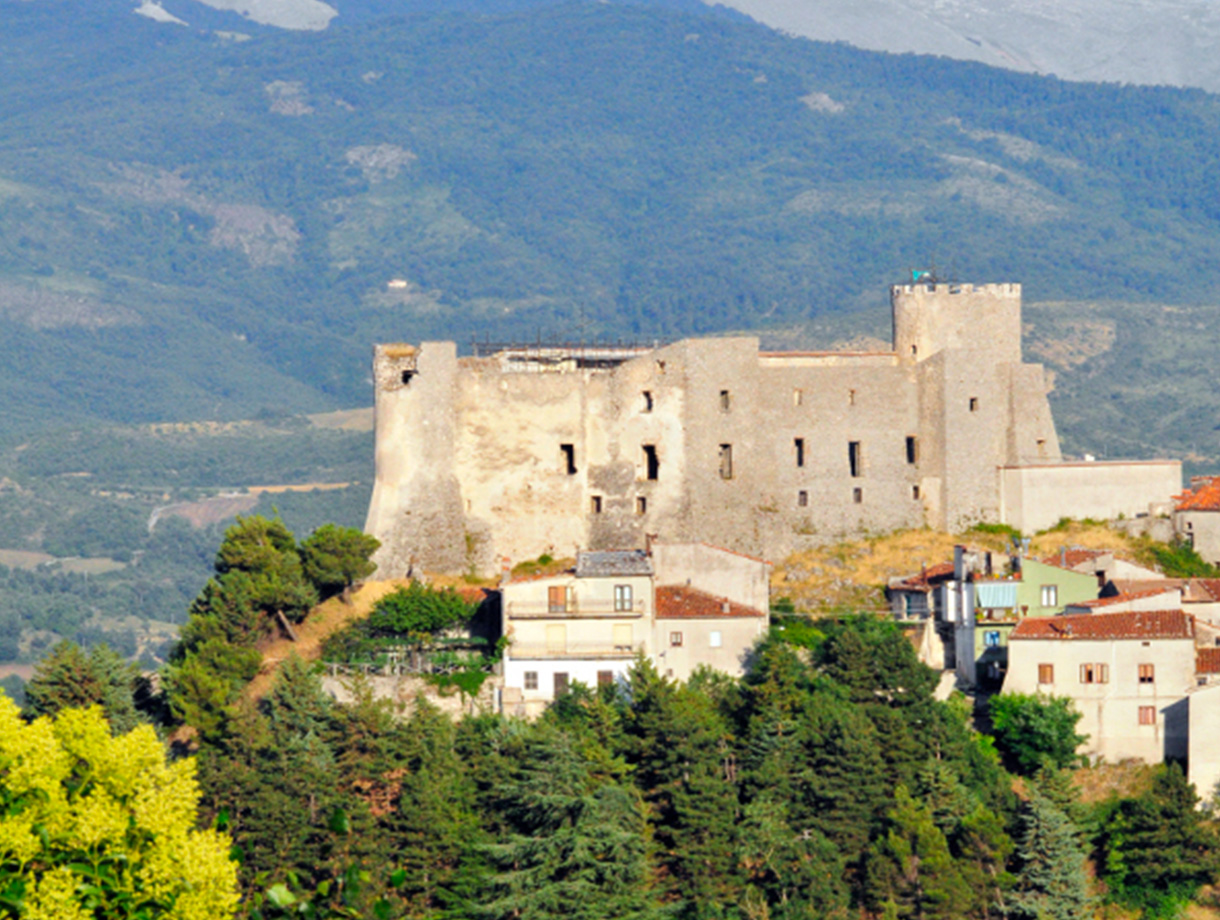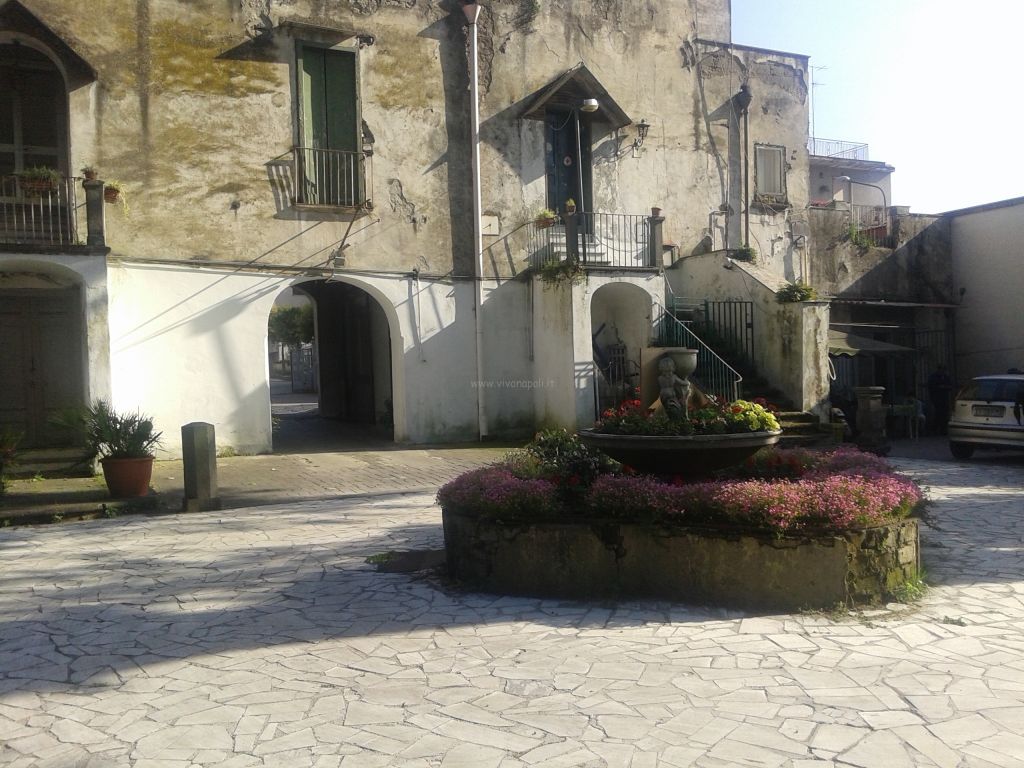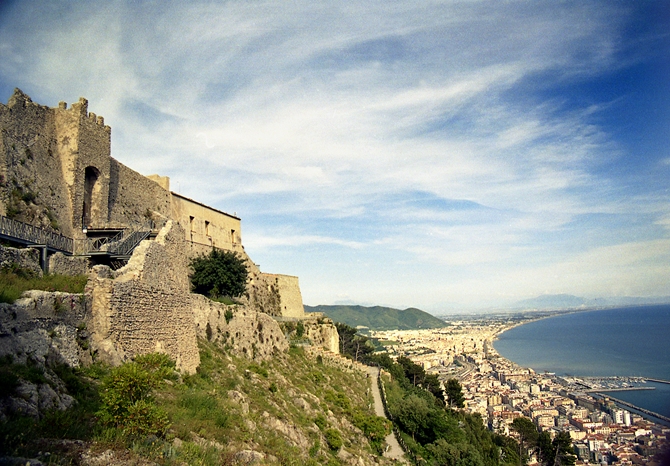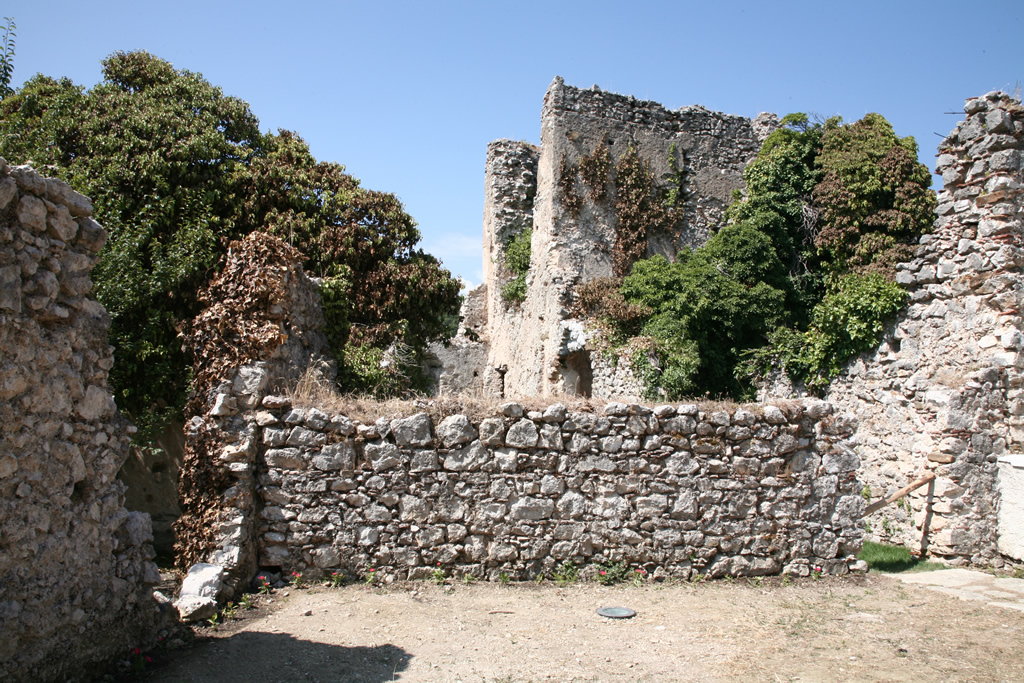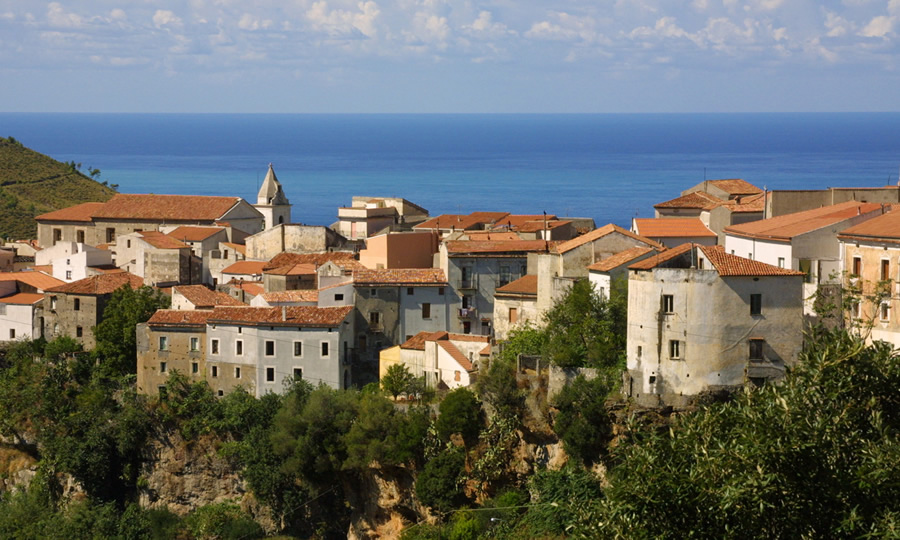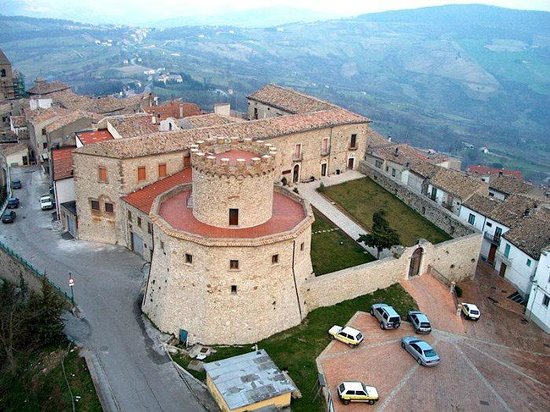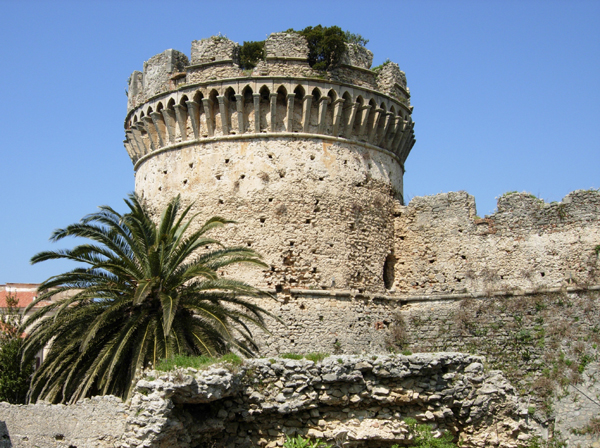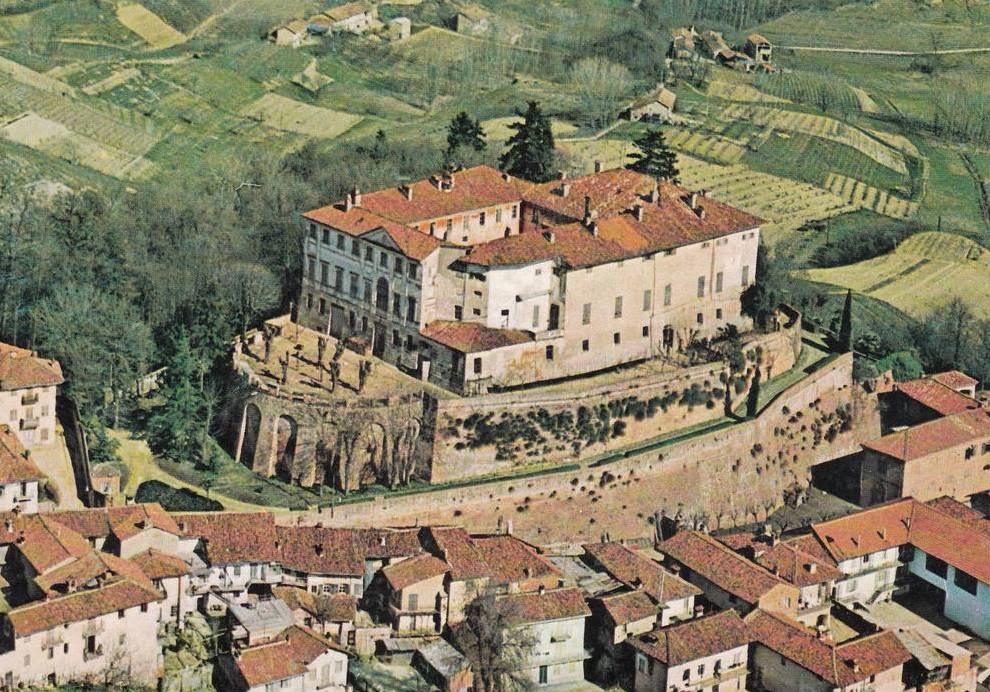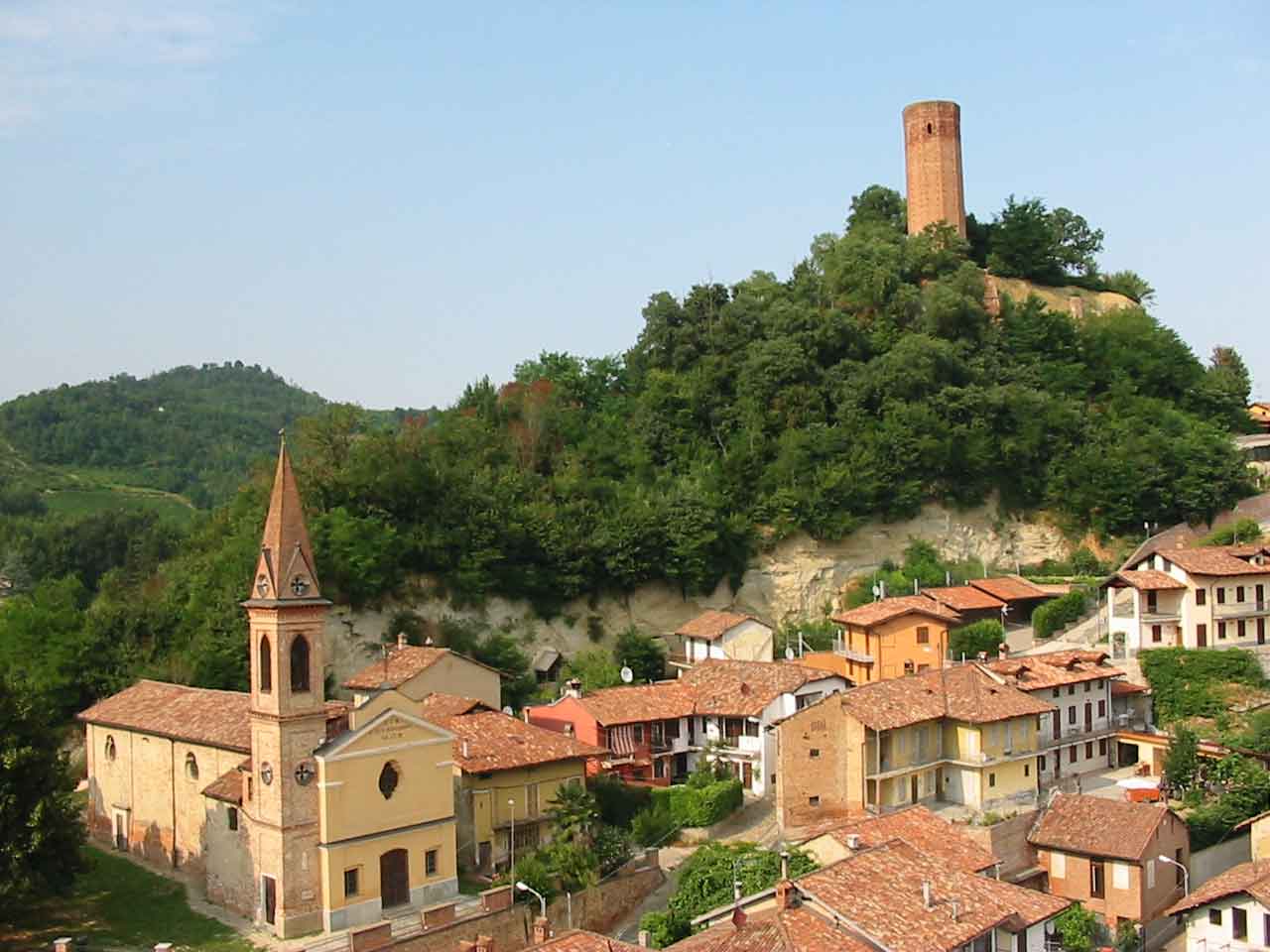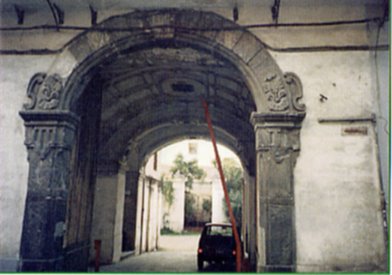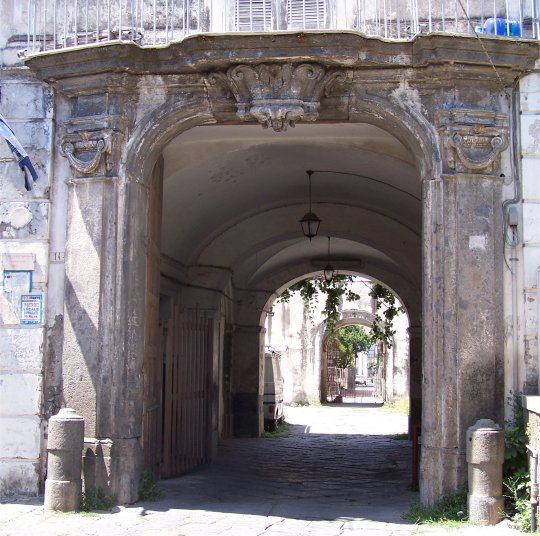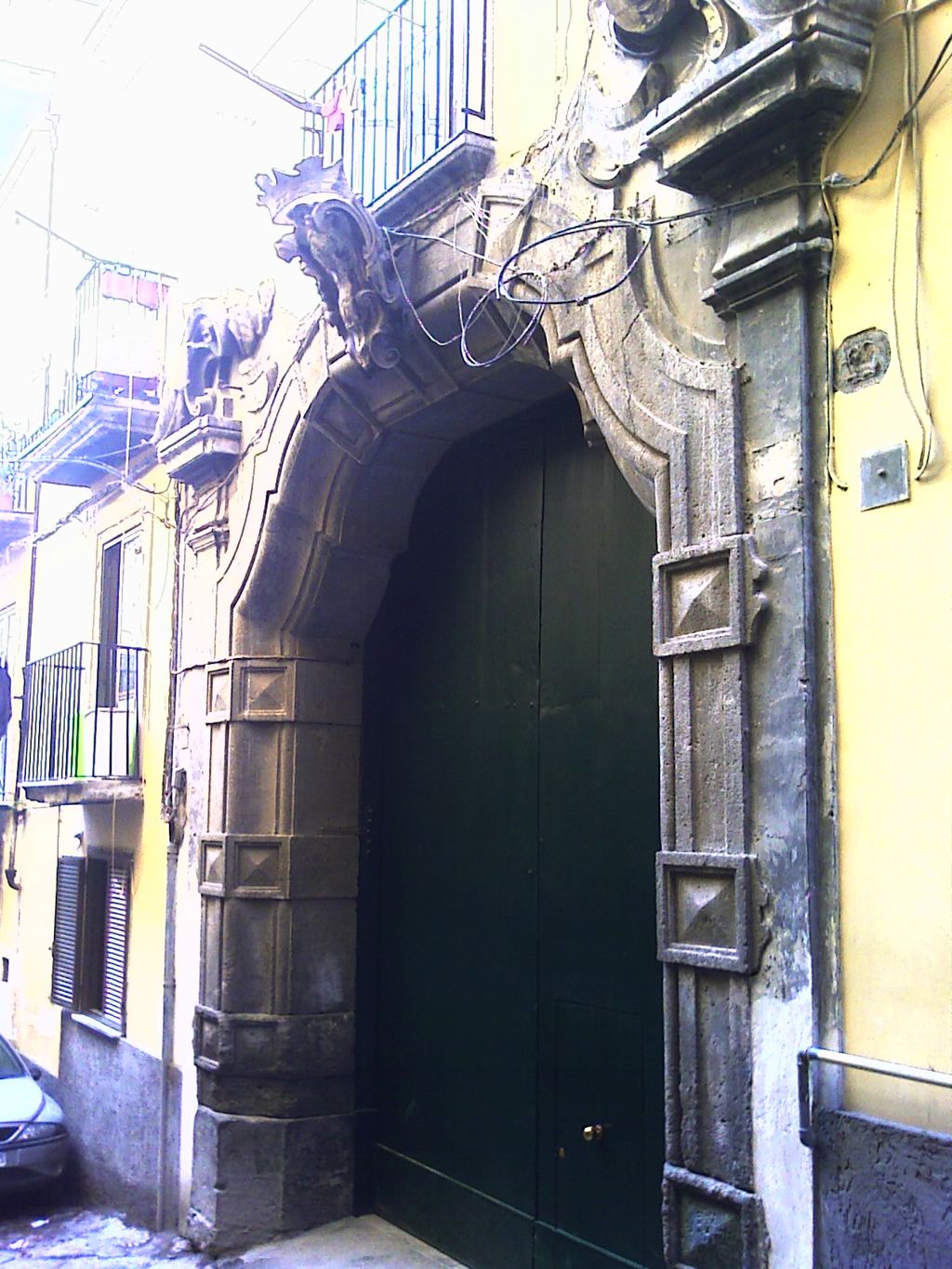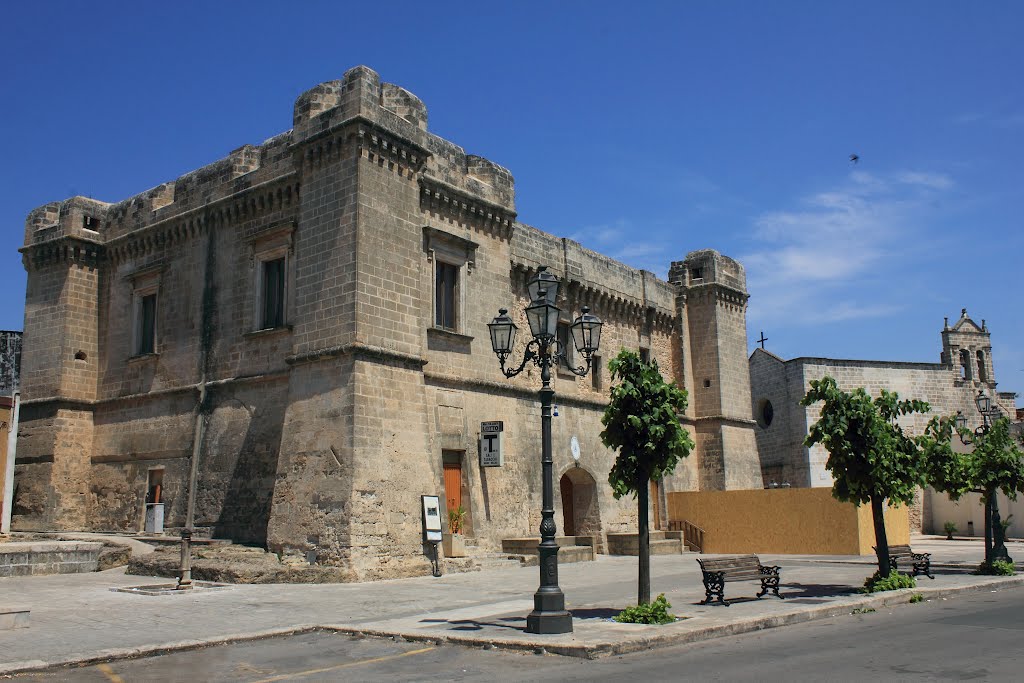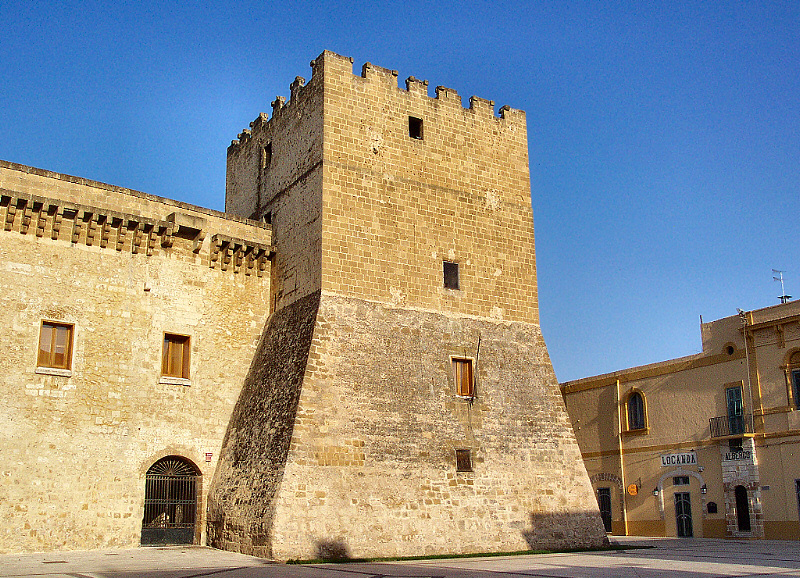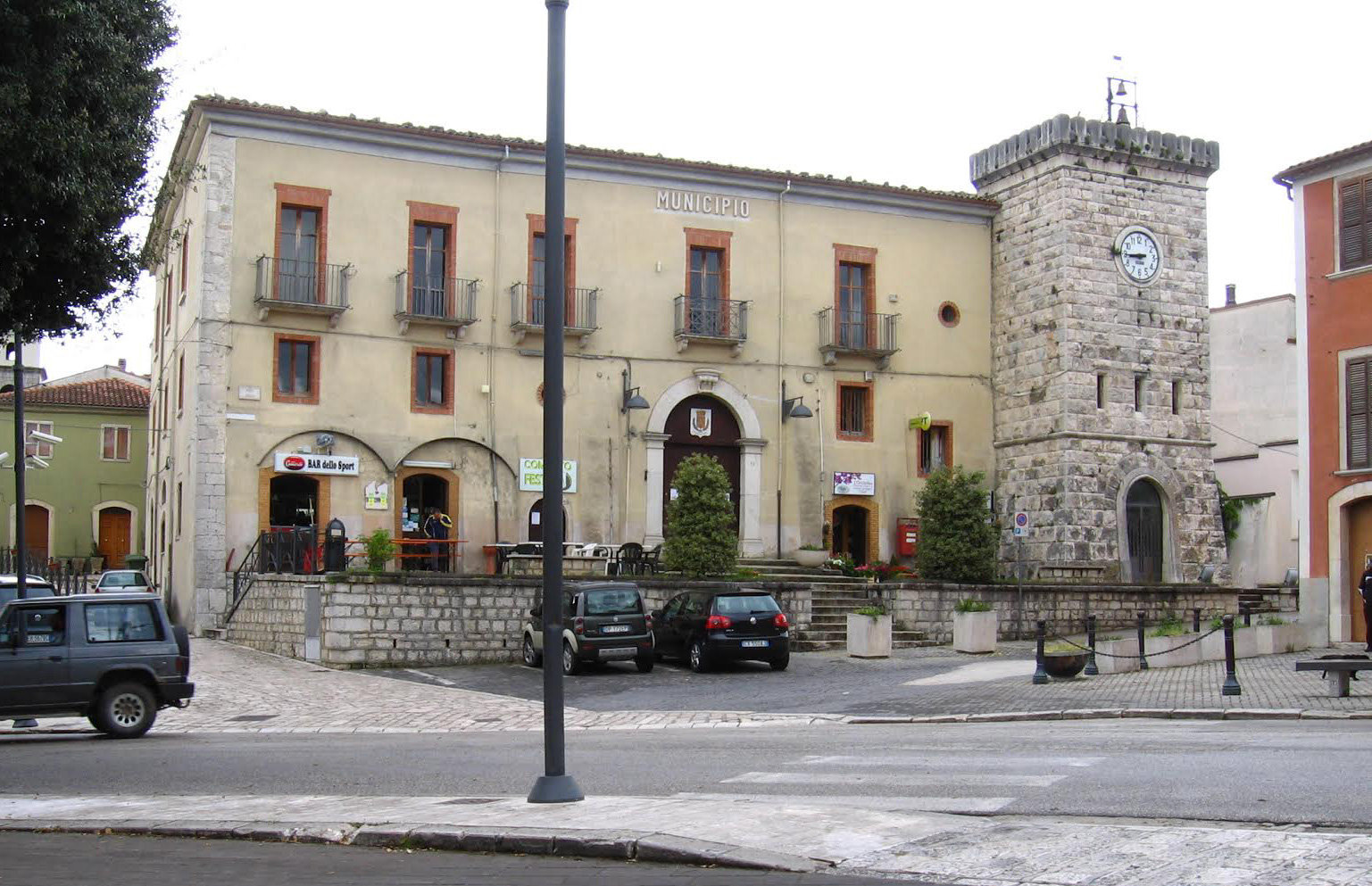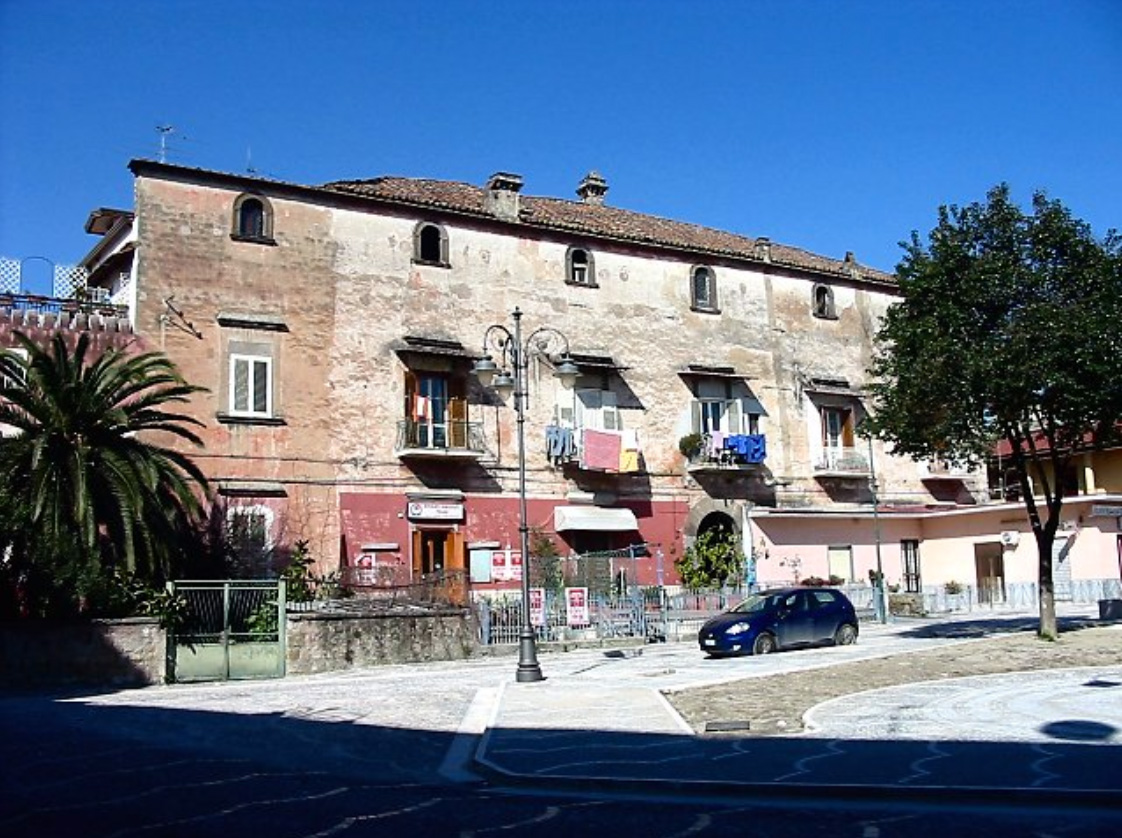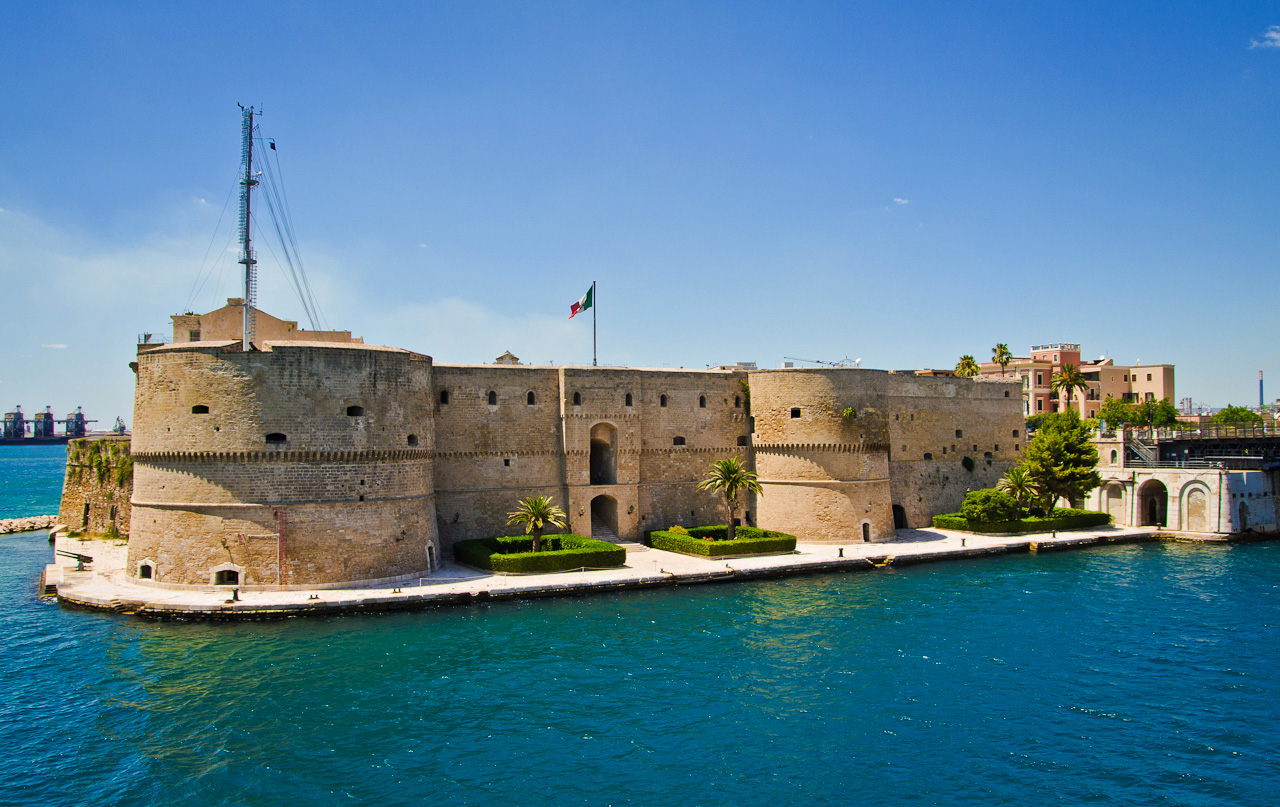Castello di Moliterno
Moliterno, Basilicata, Italy.
The Moliterno origins are lost in the depths of time, and it seems that the town was already populated in pre-Roman times.
In the second half of the eleventh century., Moliterno came under the rule of the Normans, who built the castle and reigned from 1059 to 1186
Subsequent to the Normans and through marriage, Moliterno became a possession of the Swabian Kings, Frederick II “Red Beard” of Hohenstaufen, and his illegitimate son Manfred, King of Sicily.
With Manfred’s death in battle against the Angevins in 1266 Moliterno came under the Angevin domination, and specifically under the control of the Brayda Barons. King Charles of Anjou, in fact, granted the fief and Castle of Moliterno to Oddone of Brayda, who was General of the King’s Cavalry.
Diploma of Charles I of Anjou, released in 1269 in favor of the Lombard Baron Oddo of Brayda (Castrum Moliterni cum hominibus etpertiis torri et blandis contentis in eo).
The Brayda family retained its dominion on Moliterno for 108 years from 1268 to 1477.
During that period it was attacked heavily by Swabian rebels.
Requesting compensation from King Charles of Anjou, Odolina Baroness d’Aquino, widow of Oddo Brayda, was granted by King Charles the fief of Sanseverino in the Cilento.
In 1442, after a war that lasted 20 years, between Angevins and the Crown of Aragon, King Ferdinand of Aragon, taking advantage of the continuous discord between local barons, he took possession of the kingdom of Naples, annexed it to that of Sicily.
Ugo Brayda, in an agreement with King Ferdinand II of Aragon, agreed to pass the fief of Moliterno to Antonio Sanseverino, Prince of Salerno in 1477.
Brayda, Oddone de. -Originating from a noble and powerful family from Alba, in Northern Italy, Oddone was born in the first half of the XIII Century.
His name is mentioned for the first time in 1259 when he became the Lord of the city of Alba.
He is recorded in the Chronicles as having participated in the battle of Tagliacozzo (23 ag. 1268) against Conrad of Hohenstaufen, earning special favor with Charles of Anjou, who rewarded him greatly. In 1269 the king granted him in fief the land of Moliterno Basilicata, confiscated from the Swabian rebels.
He had married in 1273 Odolina Aimone Aquinas, niece of Saint Thomas Aquinas, intermarrying with one of the most powerful families of the kingdom. From the marriage three children were born: Ruggiero, Margaret and Oddone, who was born after his father’s death and was entrusted by the king to the tutelage of John of Bois.
Villa Tortora Brayda
Sant, Anastasia, Naples, Italy.
The Villa Tortora Brayda its annexed Park dates to the late 17th Century, the Sanctuary dates back to 1593. The Estate belonged to the Muscettola family, Princes of Leporano, Patricians of Ravello, Counts of Picerno, Dukes of Spezzano.
The Muscettola family extinguished itself without heirs within the Tortora Brayda family, through the last Muscettola, Lady Nicoletta, who married our ancestor Lorenzo Boccapianola, Patrician of Naples and Bari, Peer of the Realm, of the Dukes of Ripacandida. Their daughter Margherita Boccapianola, was in her turn the last living member of her illustrious House, and went into wedlock with Carlo II Tortora Brayda, whose son Francesco henceforth carried the lineages of both Boccapianola and Muscettola.
The Villa and Park are now owned by the local municipality, and has been turned into a public park, the Municipality has now obtain a grant for the restoration of the Villa, which is in the competent hands of the talented Architect Antonella Marciano.
Castello di Arechi, Salerno
Salerno, Italy.
Castle of Arechi, Salerno
The original roman fort was built on this hill circa 550 A.D.in the course of the Greek-Gothic War. The original major tower was five or six stories tall. In the 8th century the Lombard Prince Arechi developed and strengthened the Castle, to make it impregnable.
In fact it stood the test of time and withstood the siege of Robert Guiscard in 1077. However the Princes of Salerno having run out of supplies had to give up the Castle and surrender.
This is also what led part of the family of the Princes of Salerno to escape and take refuge in Tortora, Calabria.
Castello Longobardo di Laurino
Laurino, Provincia di Salerno, Italy.
Giovanni di Lamberto , son of Lamberto of Tuscany, was already Count of Laurino , he was also known as Giovanni of Laurino . He had an illustrious lineage with Carolingian and Bavarian blood. In the year 945 AD the Count of Laurino , donated to the monastery of Saint Benedict in Salerno a forest in Mount Peloso along with the Moriano Estate near Montepeloso ( today Irsina , province of Matera) . In 988 AD , after the city was besieged and destroyed for the second time by the Saracens , it was rebuilt by the family shortly thereafter . The Castle of Laurino is likely to have been first erected in the first half of the tenth century.
Palazzo Casapesenna
Built over the Ruins of Castello delle Tortore
Tortora, Calabria. Italy.
Situated on Blanda Julia, and ancient roman town, subsequently fortified by the Byzantines, it became a Lombard domain as the Giffoni (or Cifoni/Jefuno) who descended from the Princes of Salerno fled Salerno and took refuge here, the first Lord of Tortora being Arnaldo Giffoni, son of Guamario (Waimar) and grandson of Guy (Guido) Duke of Sorrento.
Arnaldo redeveloped the older fortification and created a new fortress Castle. This in turn became frequented by turtledoves (Tortore in Italian), and became know as the Castle of the Turtledoves. Hence the change of name of the town from Blanda Julia to Tortora, and hence our family name. Over the centuries the Castle went into ruins and a Palace was built upon it. Eventually the family Vargas Machuca, Princes of Casapesenna took it over in 1824, under the Spanish Borbon Kingdom. The Palace bears the Arms of the last occupiers, the Princes of Casapesenna.
Casino Boccapianola in Castellammare di Stabia
(Subsequently Grand Hotel Quisisana)
Castellamare di Stabia,Campania. Italy.
The magnificent Casino Boccapianola in Castellamare di Stabia, on the road to Sorrento was acquired by the Boccapianola family from whence it came to the Tortora Brayda family in the late 19th century. Boccapianola had acquired it in earlier times from the Massamormile family.
Subsequently it was sold and became the original famous Grand Hotel Quisisana, of which there was another then developed on the Island of Capri.
Empress Eugenie Montijo (Doña María Eugenia Ignacia Augustina de Palafox-Portocarrero de Guzmán y Kirkpatrick) wife of Napoleon III Bonaparte, enjoyed this Palace on her visit and exile.
View MoreCastello Marchesale di Palmoli
Palmoli, Provincia di Chieti, Abbruzzo. Italy.
The Castle of Palmoli, dates from the 11th century and is located in the North side of the town named Le Coste, in the province of Chieti (Abbruzzo). The Castle guards the Treste river valley, where there were several water mills and faces the Sanctuary of St. Michele di Liscia. The structure includes a twelve-sided tower, probably constructed in the 16th century, as it incorporates a circular tower, still visible at the top. It was the fortified palace of famous Severino-Longo which became intertwined itself to Tortora Brayda through marriage, to whom the Title and Fiefdom of Palmoli went.
The area, formerly called Palmula Monteverde, has its roots in ancient times: around the year 1000 A.D. the local people, to defend themselves from the barbarian raids, took refuge on the upstream from the river Treste. There, in 1095 Pandolfo di Sangro built the earliest part of the Castle , around which he developed the city center. In in the 15th century the Castle was taken by Paolo di Sangro and the late eighteenth century by the Severino-Longo family, Marquis of San Giuliano and Gagliati, and Barons of Palmoli.
Gian Lorenzo inherited the fief and Castle through his union with Maria Severino Longo, whose parternal line had Ancient Roman roots and whose mother belonged to the very illustrious Carafa della Spina family.
His only son, Camillo Tortora Brayda, Knight of Malta, and in the Diplomatic career, was born in this Palace. He died without heirs, but passed the Titles and Captaincy of the family to Francesco Tortora Brayda, second son of Carlo II Tortora Brayda.
Castello di Bruzzano
(Castello di Armenia)
Bruzzano Zeffirio, Provincia di Reggio Calabria, Calabria. Italy.
Bruzzano Castle
Also known as Castello d’Armenia.
This Castle was conceived as a fortress in ancient times. It included residential areas, a private Chapel for the ruling Lords, and heavily fortified defenses.
Situated at the summit of the “Rocca Armenia”, in the old town of Bruzzano. The castle, now in ruins, was built between the end of the tenth and the eleventh century. In 925 it became the headquarters of the Saracens. It was later, fief of Giovanni De Brayda 1270-1305, subsequently owned by Ruffo, Carafa and Aragon families. It was damaged by the earthquake of 1783 and further damaged by the earthquakes of 1905 and 1908. Numerous alterations, additions and stratifications were made in historical periods that succeeded from the Middle Ages until the early nineteenth century. Bruzzano castle, has a typical architectural style of the area and the historical periods in which the various parts were built.
Giovanni de Brayda, Count of Brayda, Ronsecco, Sanfre e Piobesi was born in 1240 A.D. from Oddone Brayda, of the ancient noble house of Brayda. He died in 1309 A.D. in city of Brayda.
Giovanni was a man of significant financial means, and as such was able to lend money to the Senechal of the Angevin Kings, Pietro de Vins. This earned him the Royal favor and he was granted the Castles of Sant’Albano, Bene, Cornegliano and Monforte. Following the example of other members of his family, Giovanni moved to the Kingdom of Sicily, after Charles of Anjou took over the crown. Perhaps he was part of the invasion force deployed by King Charles of Anjou.
He was named captain of Gaeta. Then in August 1267 he exercised the functions of Governor in Calabria, where the news of the imminent descent into Italy of Conrad of Hohenstaufen had blazed a wide revolt anti-Angevin revolt. In his role as Governor, Giovanni directed the military operations against the rebels, until Feb. 20 1268 he was replaced by Ponce de Blanquefort. In 1269 the king gave him the post of Governor of the Lands of Otranto, on the Adriatic. A province that hosted the military bases for Angevin expeditions to the East. Having completed that assignment, he was granted the land as a fief and the castle of Bruzzano Vetere in Calabria.
Castello di Mirafiori
Sommariva Perno, Province of Cuneo, Piemonte. Italy.
This castle based in Northern Italy, at Sommariva Perno near Cuneo, was known from 1153 A.D. when it was mentioned by Pope Eugenio III, who gave it as a fief to local Lords. Around 1270 A.D. the Brayda family had purchased it. But only held on to it for a very short time, it was re-assigned in 1282 A.D. to the Isnardi. Later on it was owned by the House of Savoy.
Castello di Corneliano d’Alba e la Torre Medioevale
Corneliano d’Alba, Piemonte, Italy.
Castello di Corneliano
Constructed on the hill overlooking the city of Alba, the tower of the Castle of Corneliano imposes a sense of Medieval might. This powerful fort was built in the 12th century, and was designed using the latest architectural innovations. It had impenetrable defensive walls and numerous towers, according to local lore there were seven.
BRAYDA, Pietro de. Born in the early 13th century. Brother of Giovanni Brayda.
Pietro of the Lords of Brayda, had notable political influence and enabled Charles of Anjou, still at that time Count of Provence, to become Lord of Alba, which subsequently became a stronghold of Angevin rule. From then on The Brayda sealed an unbreakable partnership with the future King of Naples and Sicily.
Howver in the year 1276 A.D. the Anti-Angevin movement lead by the Marquis Guglielmo VII of Monferrato, meant that the Brayda family (and their military faction, known as the “Graffagnini”) given that they were strong allies of King Charles of Anjou, had to be banned and exiled from Alba.
Pietro’s nephew Goffredo de Brayda was forced therefore to handover his Castle of Corneliano d’Alba on May 19th 1278 A.D.
Although Charles d’Anjou was able to nominally negotiate the Castle back to the Brayda family only two years later, in practice, it was too late the Brayda had set forth on their long exile in the South of Italy together with Charles d’Anjou.
Upon the death of his brother in 1279 A.D. Wanting to lead a new offensive to reconquer Piemonte he went to the Royal Court in Naples to convince King Charles. He was followed by his entourage of Frankish officials, as well as some Guelphs from Northern Italy (including some of his family members). The Castle of Bruzzano Vetere, which was his brother’s, returned to the Crown, but in exchange the King invested him with the Castle of San Marco, and the Palaces of Plancellario, Casalordo, and Chiusano. He was further nominated Governor of Basilicata.
Having convinced the King of pushing on a Military offensive in Piemonte in 1281 A.D. After a long siege from his opponent Tommaso I Marquis di Saluzzo, he finally forced him to give up the Castles of Corneliano and of Pollenzo, and therefore lost the entire Piemonte region.
After the death of Charles I of Anjou in 1285 A.D. and on the basis of numerous changes in political climate, in agreement with King Charles II of Anjou, Pietro sent his brother Berardo to go and negotiate a truce in Piemonte on Feb 2 1290 A.D. On June 30th of that same year a peace treaty was penned. The treaty provided for a return to the homeland for the Brayda family, in exchenge for their military support in the protection of the land, and their payment of taxes. In return they were to recover lands, Castles and property. In addition they were also given the Castle and the Villa of La Morra.
Despite the concessions, his loyalty to King Charles II led him to return to Naples and take on further Military and political missions. He died in 1309 A.D.
Palazzo Tortora
Pagani, Naples, Italy.
The Palace, is situated in via Marconi, is the last remaining aristocratic Palace that is characterized by frescoes wall paintings.
The building has been commercially redeveloped from one of local Palaces belonging to the Tortora family to offer apartments. The family Coat of Arms is still present over the central archway.
Palazzo Tortora degli Scipioni
Pagani, Naples. Italy.
This Palace was constructed in the second half of the 17th century by the Palatine Count Carlo Pignataro.
The property became a Tortora property, in the early 1800s through the union of Carmela Pignataro, a descendant of Count Carlo and Scipione Tortora.
Palazzo Tortora
Naples. Italy.
Palazzo Tortora in Naples is a monumental Palace located in salita Tarsia.
The Palace dates to the 16th century, and was once in a rural setting, the city then getting built up around it. In the 18th century it was redeveloped in the Baroque styling.
The Tortora Coat of Arms is presented over the vault.
There is an inner courtyard and a garden.
Castello di Leporano
(Castello Muscettola)
Torricella, Taranto, Puglia, Italy.
This Castle was built on the highest point of the city, and is characteristically designed as a sizeable fortress.
The oldest part was the square tower, dating to the Norman – Swabian period, circa 1300.
Although there were previous Lords, the Muscettola Princes developed a Church within it in 1617. The Muscettola family held the Castle until the death of the seventh and last Prince Giovanni Battista Muscettola, who died without heirs and his brother Francesco, who was the father of Nicoletta Muscettola, our direct ancestor. The Muscettola bloodline remains in Tortora Brayda.
The Castle was subsequently sold and is now owned by the local municipality and is used for cultural events.
Castello di Pulsano
Taranto, Puglia, Italy.
This castle originally built for the Lord de Falconibus circa 1430 A.D. Became a fiefdom of Sergio Muscettola, First Prince of Leporano, on June 17th, 1617.
The Muscettola family eventually moved to the Castle of Leporano (Castello Muscettola). The Muscettola family held the Castle of Leporano until the death of the seventh and last Prince Giovanni Battista Muscettola, who died without heirs and his brother Francesco, who was the father of Nicoletta Muscettola, our direct ancestor. The Muscettola bloodline remains in Tortora Brayda.
Palazzo Marchesale di San Giuliano
(Severino Longo)
San Giuliano in Sannio, Provincia di Campobasso. Italy.
This Palace was built in the 17th century over the remains of the castle. The tower which is visible on the right hand side was in fact from the old castle and was rebuilt by order of the Marquis Gian Lorenzo Tortora Brayda in 1902. Heading up the restoration work was Luigi Rucci, to whom we are grateful.
Gian Lorenzo inherited the fief and Castle through his union with Maria Severino Longo, whose parternal line had Ancient Roman roots and whose mother belonged to the very illustrious Carafa della Spina family.
His only son, Camillo Tortora Brayda, Knight of Malta, and in the Diplomatic career, was born in this Palace. He died without heirs, but passed the Titles and Captaincy of the family to Francesco Tortora Brayda, second son of Carlo II Tortora Brayda.
Palazzo Ducale di Fratta Piccola
Provincia: Napoli
Città: Frattaminore, via Roma
Coordinate GPS: @40.956826,14.273558
The Duke’s Palace is a three story quandrangular building, with a court formation. In origin the lowest level provided for stables and warehousing, in subsequent centuries these were transformed in habitable quarters. On the gournd floor there was also a Chapel, there again the altar was moved in recent times to make more useable space. The Palace’s Altar is now in the Church of Santa Annunziata, in Piazza Crispi.
Frattapiccola, with its ancient moat and castle was a feudal land from the 13th Century.
In 1750 the Castle and Town, under whose jurisdiction were the inhabitants of Frattapiccola passed on to the Carafa family Counts of Policastro, and then to the next Count of Policastro, Gian Lorenzo Tortora Brayda, and eventually to Francesco Tortora Brayda di Belvedere (1853-1930).
Castello di Taranto
Taranto, Puglia. Italy.
This Castle references Oddone Brayda, the same person who had the Castle of Moliterno above.
Oddone Brayda was appointed in 1275 Castellan of the castle of Taranto : the castle was completely restored under his direction. Oddone died near the end of this period, in early 1280 . The Castle of Taranto , called Castel Sant’Angelo , is located close to a ‘ natural depression of the ancient bed of rock above which stands the ancient city and is now basically a reconstruction of a previous Aragonese Norman – Swabian – Angevin fortress built on same location but having different characteristics since under Brayda it was a typical medieval castle with numerous tall towers and it was built over a previous Byzantine fortress that had the foundation resting on structures dating back to the greek period ( IV – III century BC ) .
Brayda, Oddone de. – Originating from a noble and powerful family from Alba, in Northern Italy, Oddone was born in the first half of the XIII Century.
His name is mentioned for the first time in 1259 when he became the Lord of the city of Alba.
He is recorded in the Chronicles as having participated in the battle of Tagliacozzo (23 ag. 1268) against Conrad of Hohenstaufen, earning special favor with Charles of Anjou, who rewarded him greatly. In 1269 the king granted him in fief the land of Moliterno Basilicata, confiscated from the Swabian rebels.
He had married in 1273 Odolina Aimone Aquinas, niece of Saint Thomas Aquinas, intermarrying with one of the most powerful families of the kingdom. From the marriage three children were born: Ruggiero, Margaret and Oddone, who was born after his father’s death and was entrusted by the king to the tutelage of John of Bois.

